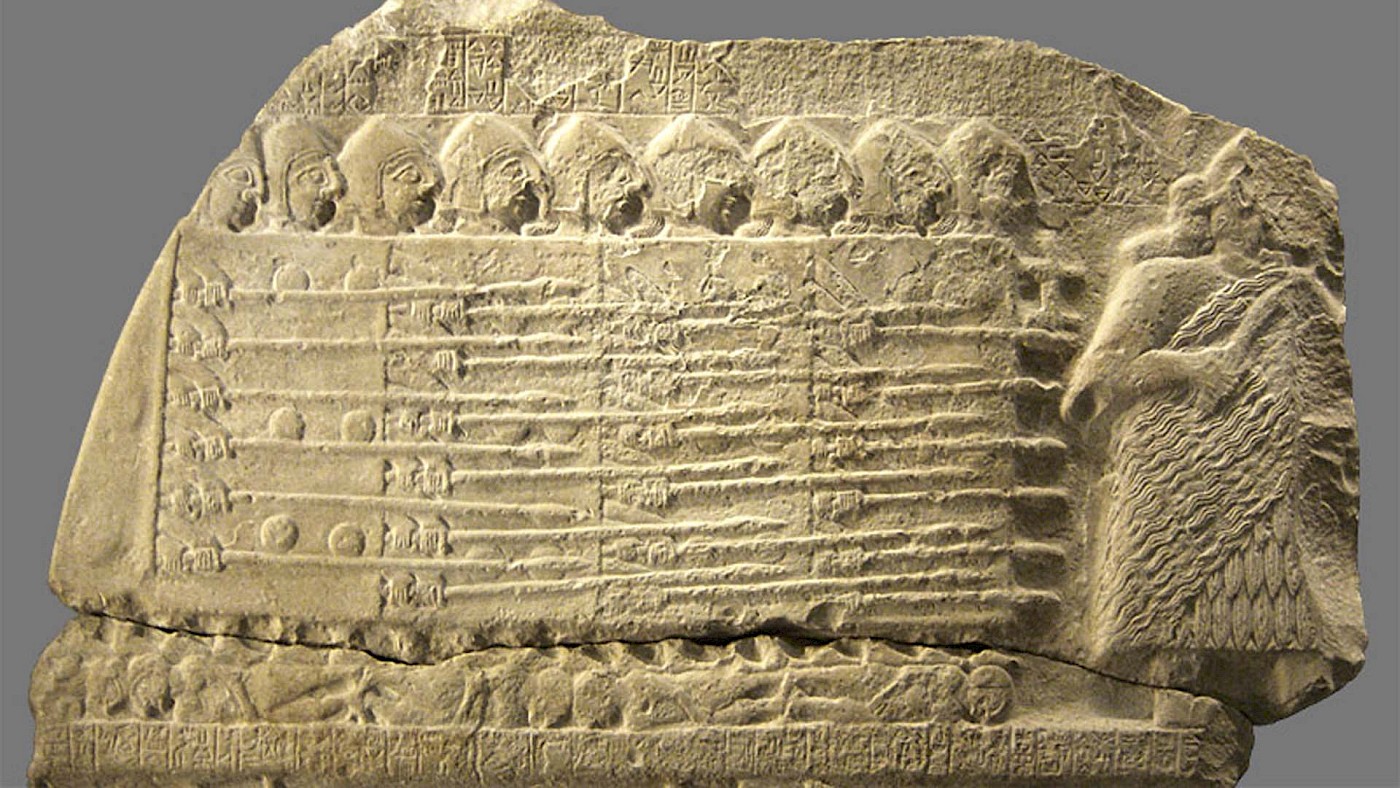Currently on display at the Louvre Museum, the Stele of the Vultures originates from Tello (ancient Girsu) in Iraq and dates to the Early Dynastic III period, or roughly between 2600 and 2350 BC. The stele was erected to celebrate the victory of the Sumerian city-state of Lagash, ruled by Eanatum, over its rival Umma. While only fragments have survived, it originally must have been approximately 180 cm tall, 130 cm wide, and 11 cm thick. It was carved out of a single limestone slab.
There are different scenes on either side. The scenes on one side have been interpreted as historical or terrestrial, while the other side is thought to be mythological or divine. Both are connected to Eanatum, but only the historical side need interest us here, because it affords some interesting information with regards to the history of warfare. “Warfare”, in this context, refers to organized violence, and in particular the form of warfare practiced by Sumerian city-states.
The historical side of the stele is divided into four registers or panels, which we must presumably read from top to bottom. The top of the first panel depicts a large flock of vultures flying through the air while carrying severed heads and arms of the defeated soldiers of Umma in their beaks. Immediately below we see Sumerian soldiers from Lagash marching in formation, trampling the bodies of their fallen foes, emphasizing that this scene takes place immediately following the defeat of their opponent in battle. The soldiers march as a single unit, with the front rank defended by large, rectangular shields; spears poke out from between the shields. They are led by none other than King Eanatum himself. To the right of the advancing army, soldiers of Umma, shown in much smaller size, tumble or flee.
The second panel from the top depicts more soldiers marching, this time apparently without shields, and with their spears held aslant against their shoulders in one hand, and axes held up in the other. They follow a war-cart pulled by donkeys or onagers, driven by a figure holding a long spear overhead: this is again supposed to be Eanatum. The right portion of this panel is lost, but must have shown the enemy fighting or, perhaps more likely, fleeing. It’s not clear if the army here is supposed to be the same as the army depicted in the second panel.
The third panel, and the last that is more or less decently preserved, shows part of a seated figure, a naked priest performing a libation ritual, and a pile of corpses flanked by figures carrying baskets on their heads. The baskets probably contained earth, used to bury the pile of corpses. Presumably the corpses consist of the fallen of Umma, but they may have included the bodies of dead soldiers from Lagash, too. A cow is tied to a post near the seated figure’s feet: no doubt the animal was to serve as a sacrifice. The seated figure is undoubtedly again Eanatum, keeping a watchful eye on the proceedings here.
It’s the panel with the soldiers marching in formation that has drawn the most interest from students of ancient warfare. The formation used by the soldiers of Lagash has drawn comparisons with later Graeco-Roman formations, most notably the Macedonian phalanx. But the peoples of the ancient Near East were apparently the first to deploy troops in formation. Aside from the Vulture stele, there are other pieces of evidence, including wooden models of soldiers marching in block formations from ancient Egypt.
Further reading
- A. Ferrill, The Origins of War: From the Stone Age to Alexander the Great (1985).
- W.J. Hamblin, Warfare in the Ancient Near East to 1600 BC: Holy Warriors at the Dawn of History (2006).
